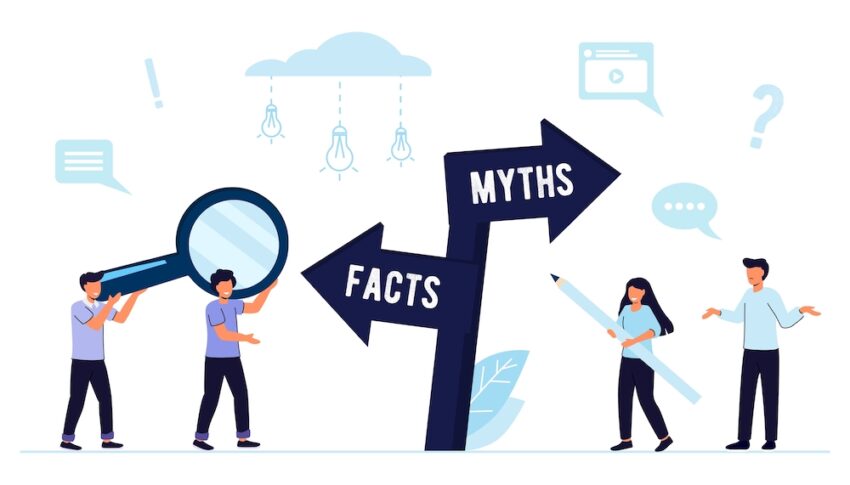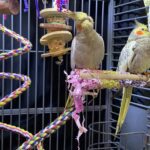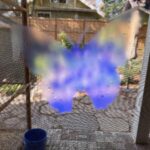
Case study of “How do I know who to trust?”
I wanted to provide an example to back up what I wrote about in How do I know who to trust? I wish I could say it’s easy to spot misinformation, but it does get easier over time.
I could’ve picked any number of articles, but I chose this one to illustrate how I determine a trustworthy source.
Proper lighting to support avian vision
On the plus side
- It comes from a seemingly credible source, one of the largest bird rescue organizations in the US
- Clearly a lot of effort was put into writing a very wide-reaching article that is presented and formatted nicely and with images
On the minus side
This article has a number of obvious red flags to start off with:
- No author is listed as well as no contact information
- No sources are cited for an article that is highly technical and critically important to bird health
Analysis
Now I’m going to go through the article and quote some bits of it and explain the concerns that I find. This may come across as overkill, but this article happens to have pretty much every problem that can be used to identify an untrustworthy source so it makes a great example.
Our human homes are lit for our comparatively unsophisticated eyes, and they often leave our feathered companions, if not “in the dark”, then something relatively close to it.
Mickaboo Companion Bird Rescue
First we start off with classic exaggeration and scare tactics. If you don’t read this article, you are leaving your bird virtually in the dark, but this article will save you. Is there evidence that birds in the home behave as in they are “relatively close to being in the dark”?
—
And, their visual acuity is superior; avian photoreceptors are 8 times denser than the human eye, allowing them to focus on the entire field of view, all at once.
Mickaboo Companion Bird Rescue
Whenever I see an exact numerical claim like the one below, I always look it up. Turns out even birds of prey only have 5x the density of photoreceptors and it varies widely by bird species.
The density of the photoreceptors is critical in determining the maximum attainable visual acuity. Humans have about 200,000 receptors per mm2, but the house sparrow has 400,000 and the common buzzard 1,000,000.
Bird vision—Wikipedia
Also, photoreceptors have nothing to do with the ability to focus AND birds cannot see the entire field of view in focus at once. Note that only the first 6 words are factually correct. If this sentence is almost completely wrong, how can I believe the rest?
Unlike the mammalian eye, it is not spherical, and the flatter shape enables more of its visual field to be in focus
Bird vision—Wikipedia
—
The lighting that humans use in their homes is often hundreds—or thousands—of times dimmer than the tropical sun that our companion birds are used to.
Mickaboo Companion Bird Rescue
It’s disingenuous to compare full sun in the tropics to your living room. I admit I don’t have proof for this, but I suspect parrots can see perfectly fine on a cloudy day. The difference in light intensity of a cloudy day (1,000 lux) and your living room (50 lux) is merely 20 times not hundreds or thousands. Source: Lux—Wikipedia
That doesn’t make the author’s point invalid but the exaggeration is meant to scare you into follow their, as you shall see, misguided advice.
—
Recent studies have shown that birds require five-to-twenty times the light humans do in order to see in color.
Mickaboo Companion Bird Rescue
The use of “recent studies” is often synonymous with “I want to make this sound legitimate even though I made it up” — in this case, my hours of searching found no evidence of these multiple, recent studies.
—
Far UV-A (315-345 nm), which produces suntan and vitamin D production in humans.
There’s also little evidence that UV-B is useful for generating vitamin D, but that’s a topic for another day.
Birds can manufacture vitamin D with UV-A. UV-B is not required for birds and should only be used under explicit directions from your avian vet
Mickaboo Companion Bird Rescue
All three of these are false and all the avian vets I’ve come across would agree. UVA does not cause Vitamin D production. Only UVB does. I cover this in more detail in UV myth #1: Vitamin D. I can’t overemphasive how detrimental this advice is. Imagine you have a bird deficient in Vitamin D and you put them under a UVA bulb. It’s harmless, but it won’t fix the problem!
—
Thus, the UV-B that most reptile bulbs put out—and which have been repackaged as Avian lights—are not necessary to support your bird’s vision and, in fact, can be dangerous.
Mickaboo
Here we have scaremongering without providing any evidence to back it up. How dangerous is it? Is it dangerous at all? How does the danger weigh against the positive benefits?
—
Avoid Avian specialty bulbs for now. These are largely repackaged, reptile bulbs with a dangerously high UV-B content for birds
Mickaboo Companion Bird Rescue
I’ll first point out that the article later recommends Featherbright, an avian specialty bulb that is not a repackaged reptile bulb.
The only repackaged reptile bulb I could find was Zoo Med Avian Sun so I presume that’s what the author is referring to. They advertise a 5% UVB content. The author of this article appears to be unaware of two VERY important things:
- When a bulb says 5% UVB, it actually means 5% of the UV is UVB. Since UV is at most 3% of light (see reference below), that means the UVB content is actually 0.15% — this matches what is in natural sunlight.
- Related to that, the percentage is relative to the power of the bulb. So, a 60 watt bulb with 5% UVB will emit more UVB than a 30 watt bulb. The sun will emit tons more than either of them, even though the percentage is the same.
I don’t want to be too critical here because math is indeed hard and the author just doesn’t understand it enough to be putting numbers into the article.
References:
Remember also that percentages of UVB listed on tube packaging are not usually much help unless you know the total output of the bulb.
Benefits of UVB Lighting for Companion Birds—Hagen Avicultural Research Institute
However, at ground level sunlight is 44% visible light, 3% ultraviolet (with the Sun at its zenith), and the remainder infrared. […] Of the ultraviolet radiation that reaches the Earth’s surface, more than 95% is the longer wavelengths of UVA, with the small remainder UVB.
Ultraviolet—Wikipedia
Conclusion
This article has so much misinformation that a bird rescue has no business leaving it up on their website. Most of it is easily refuted with either evidence or lack of evidence. This article is especially concerning because lighting and especially Vitamin D is criticially important to bird health. The only ways to get Vitamin D are supplementation (which is prone to overdose) or natural or artificial light.
A sad phenomenon of the internet is that a bad source of information can become a popular search result simply because many sites link to it. Perhaps a few sites linked to the bird rescue because they trusted them. Then other people linked to it because the original sites linked to it. It ends up snowballing and if anyone were to provide correct information (like I hope I have done!), it’s an uphill battle to become a more prominent search result.
Check out articles on related topics:

